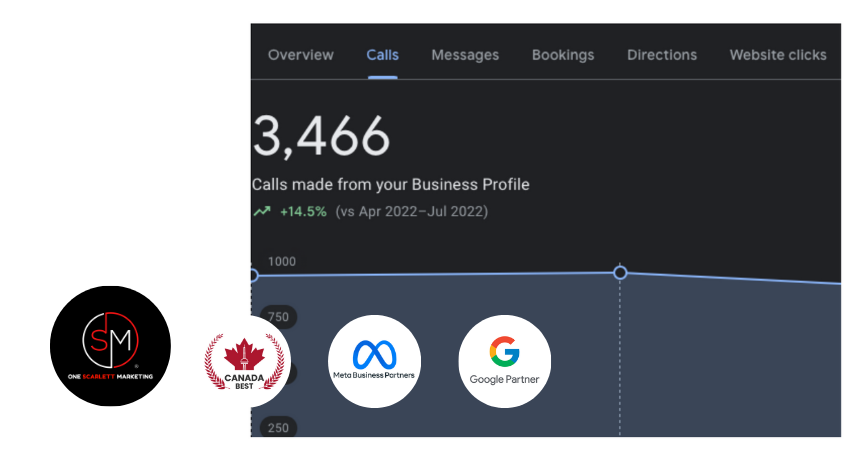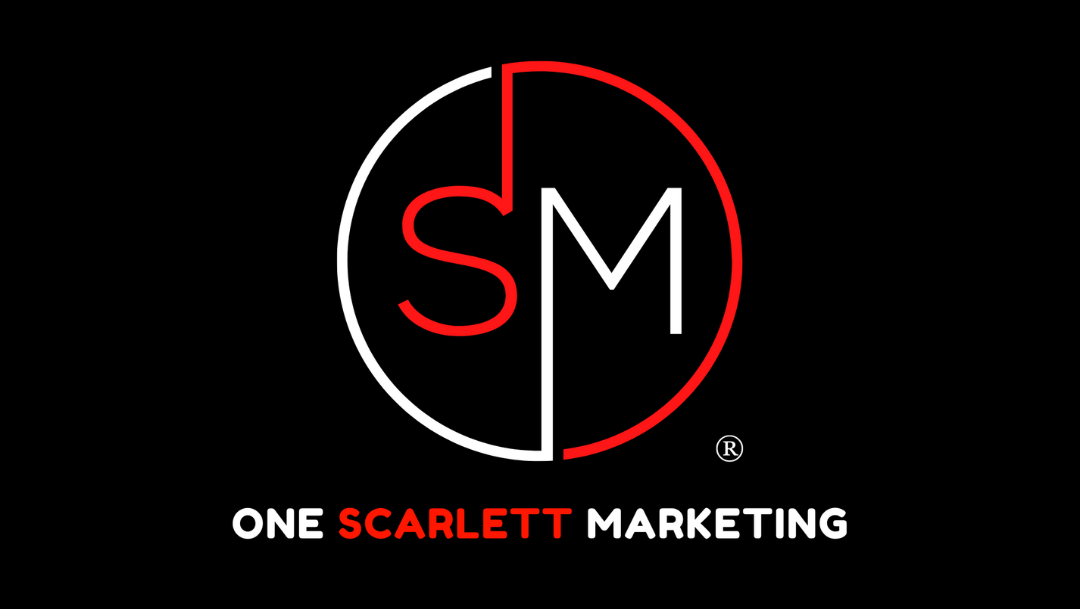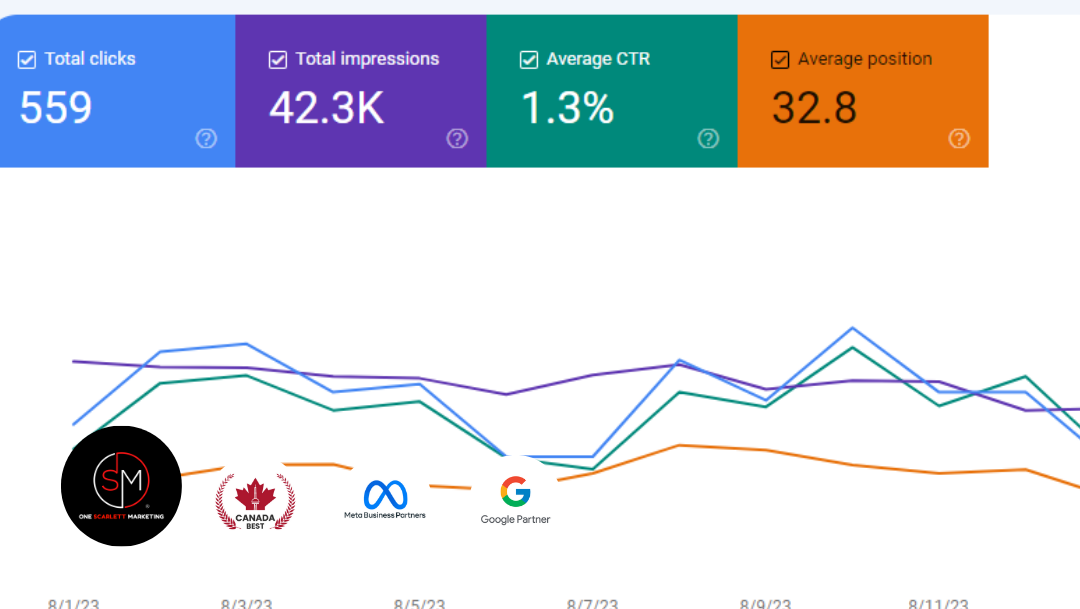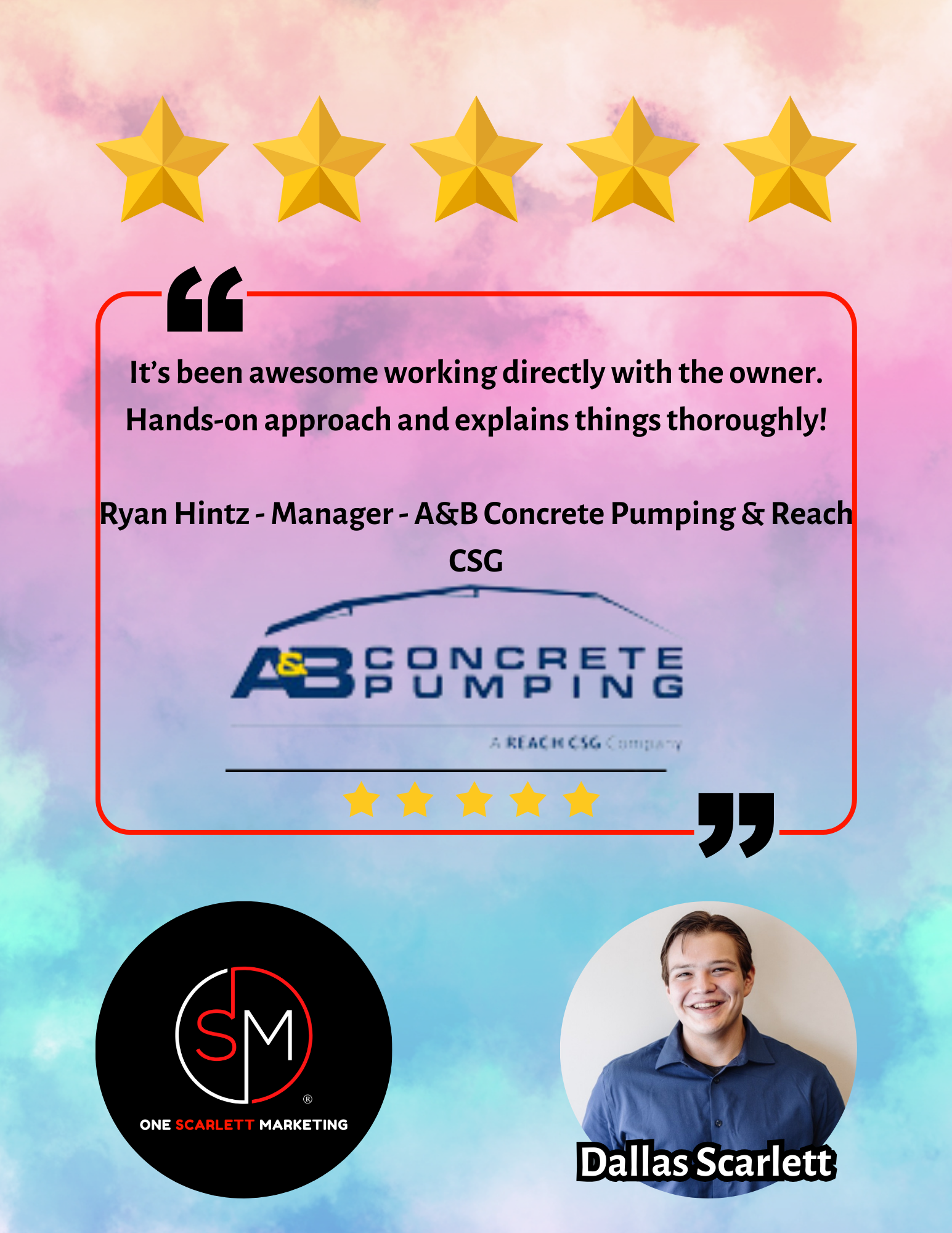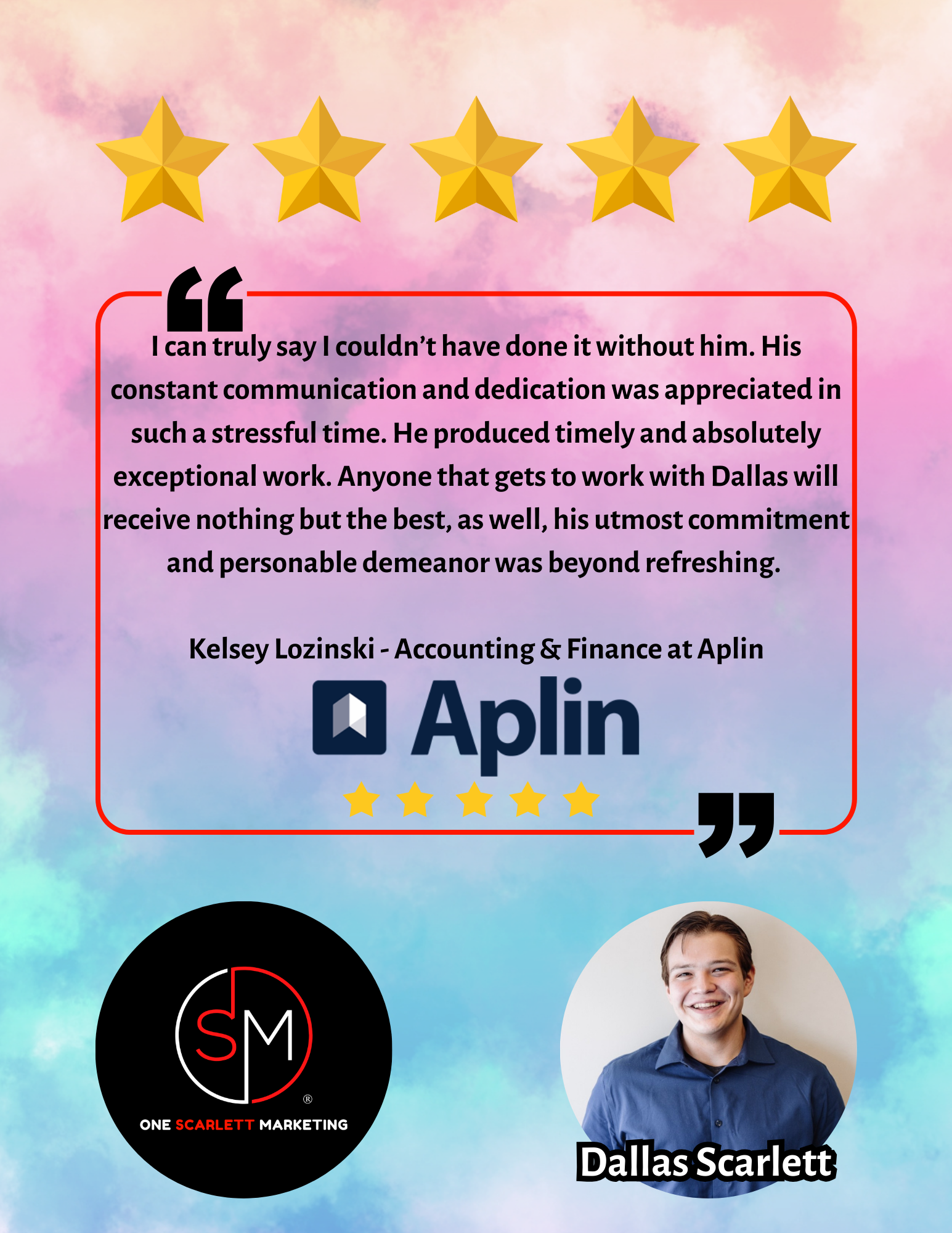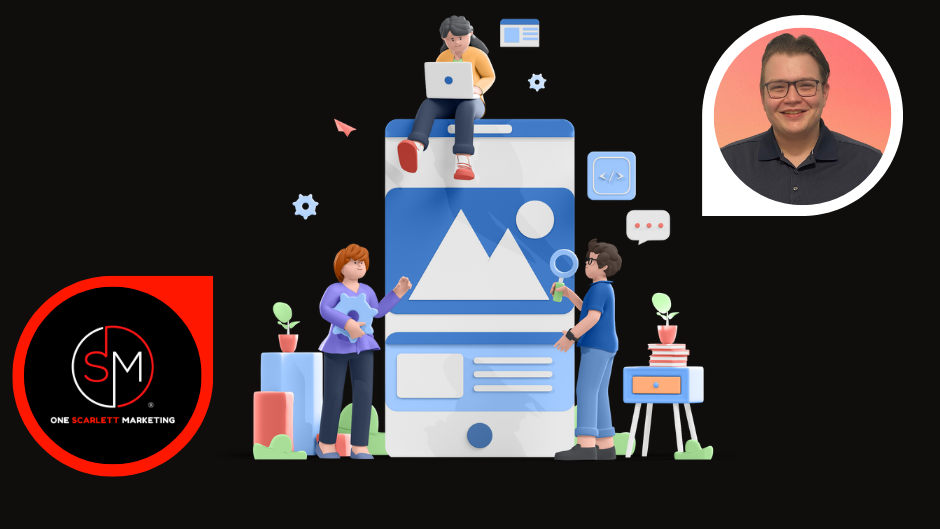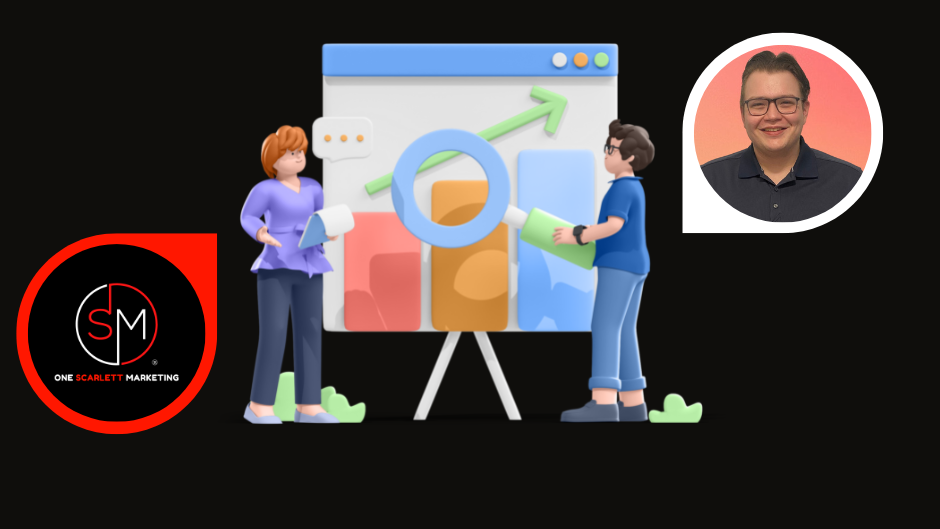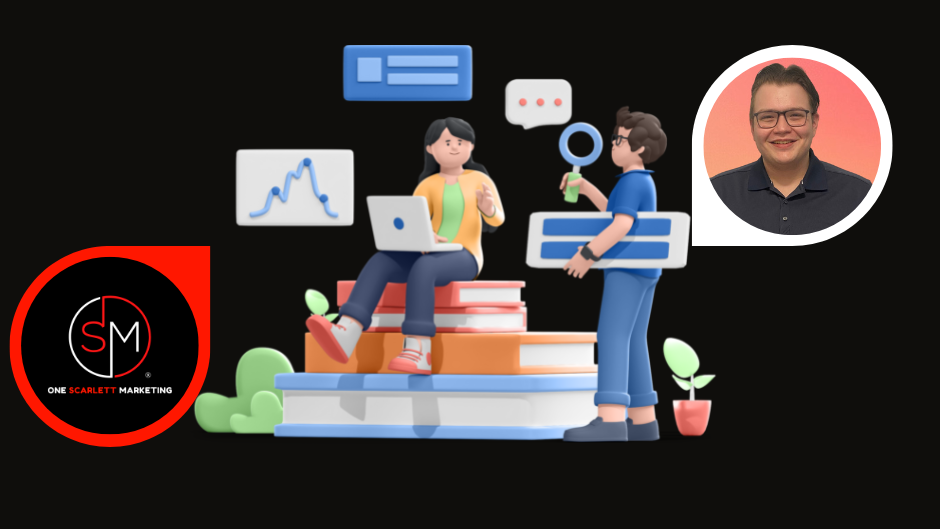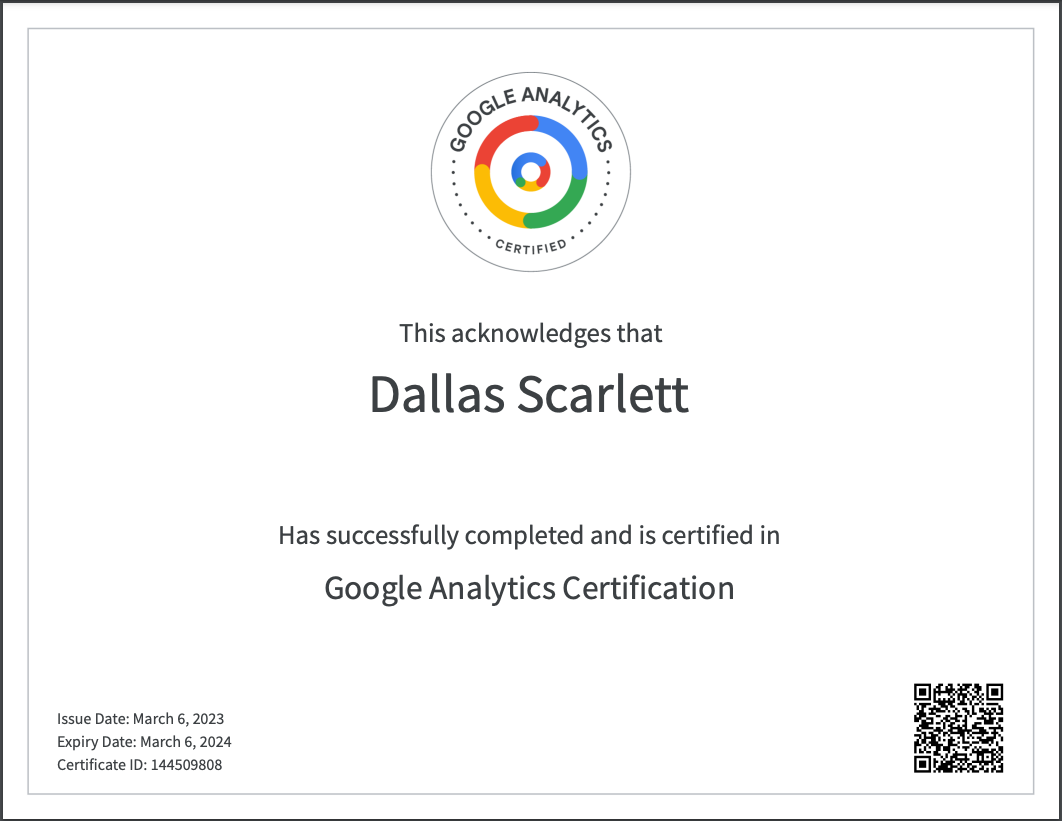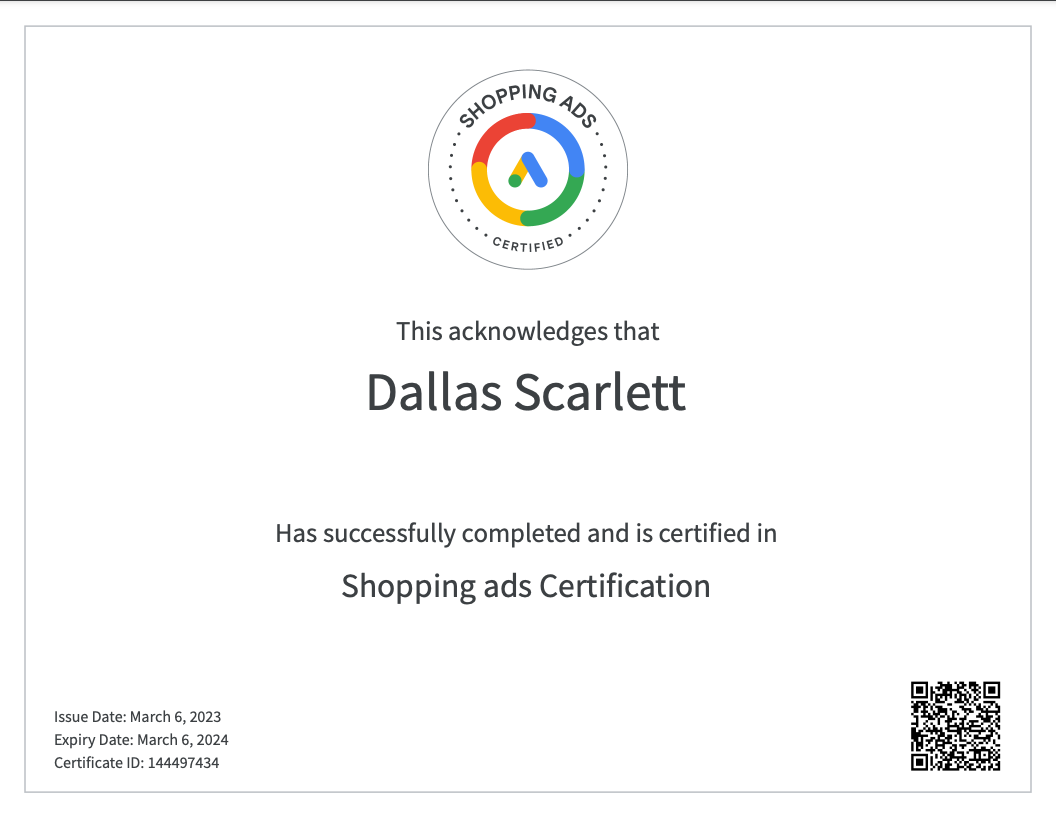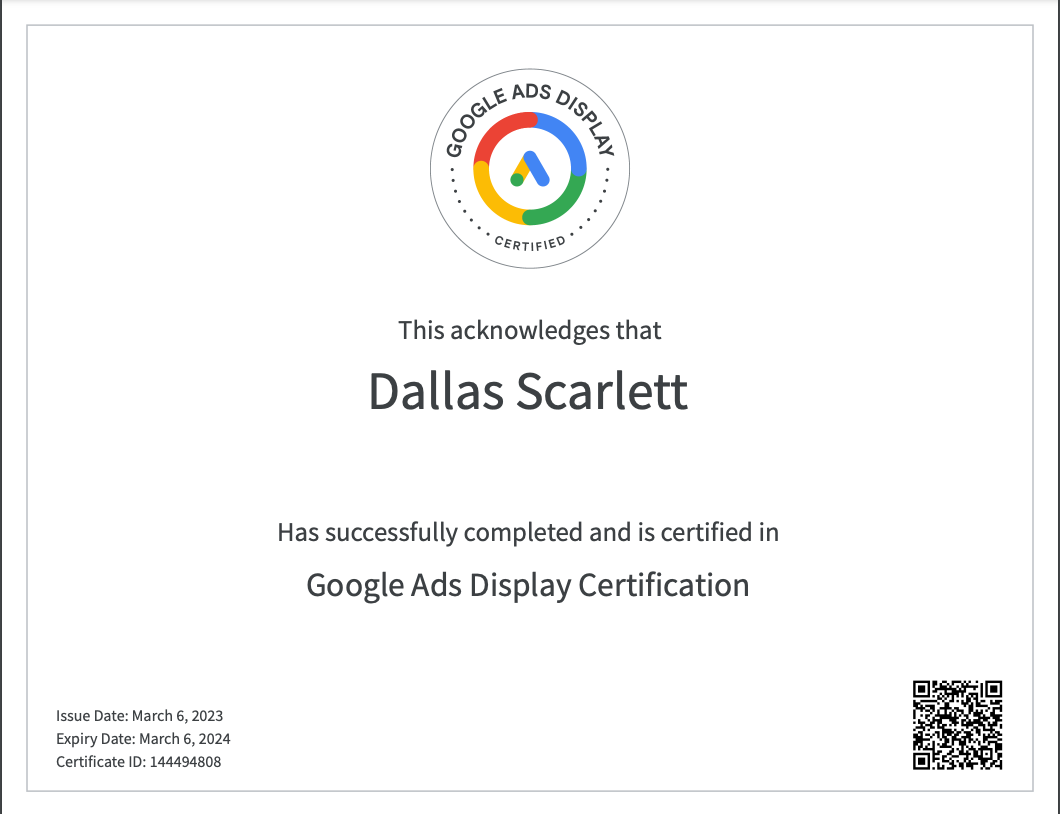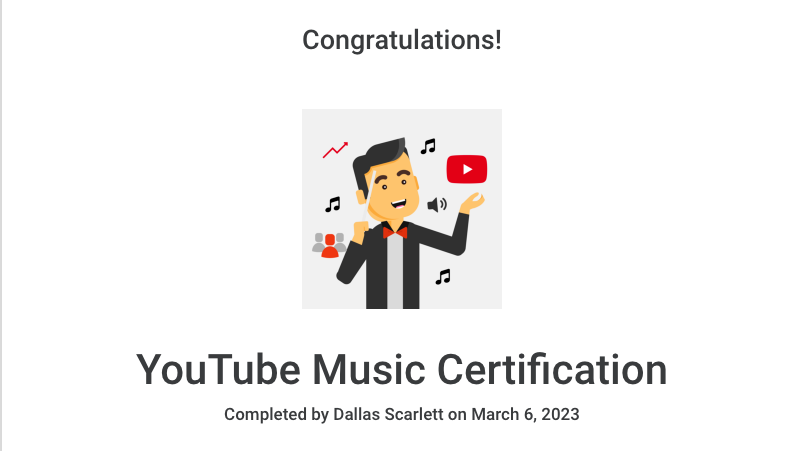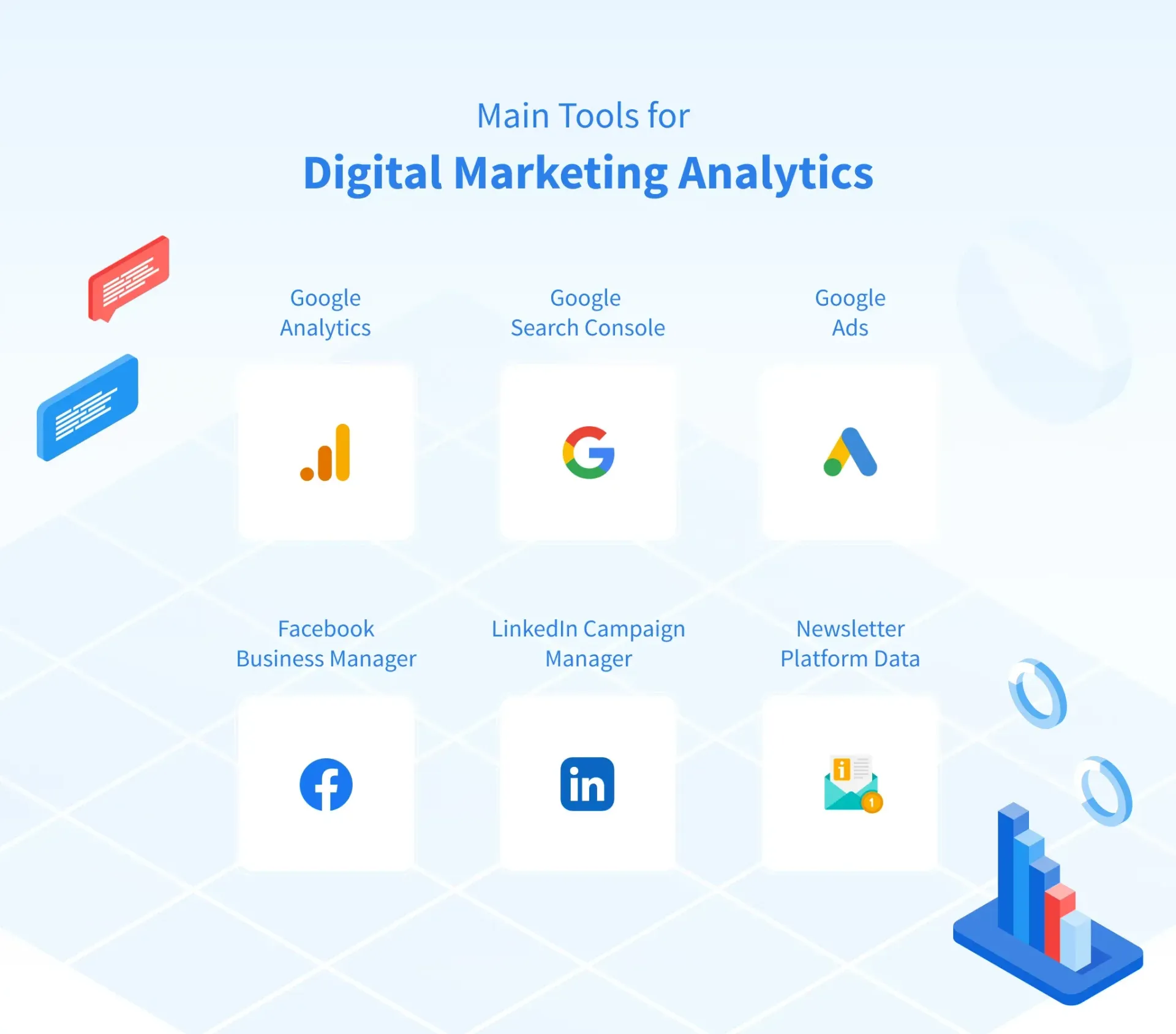Website Portfolio
Website PortfolioSEO Near Me
See SEO ServicesGoogle Business Profile
Google Business Profile HelpWebsite Design
Website DesignSocial Media Marketing
Social Media Marketing ManagementPPC Advertising
PPC AdvertisingDigital Marketing Packages and Pricing
Digital Marketing PricingDigital Marketing Blog
Digital Marketing BlogGoogle Business Profile Verification Help
Google Business Profile Verification HelpMeet The Team
Meet The One Scarlett TeamSee Client List
See Client ListDigital Marketing Edmonton
Digital Marketing EdmontonSocial Media Marketing
Buttone-Commerce Website Design in Edmonton Alberta by
One Scarlett Digital Marketing
The eCommerce industry is growing at a rapid rate, and as a business owner, staying up to date with best practices is essential for successful online merchandising. Below are three best practices for establishing and enhancing a successful eCommerce website.
Neil Merkel, V.P. Silent Aire
Click For Service PackagesTroy Lutz, Elite Promotional Marketing
Click For Service PackagesRyan Hintz, Reach Construction Group
Click For Service PackagesStephen Pugh, Upside 2 Down Conflict Resolution
Click For Service PackagesKelsey Lozinski, Aplin Accountant Group
Click For Service PackagesInvest in Top-Quality Visual Content
The presentation of your products is a major factor in captivating customers and securing conversions.
Visually appealing product image galleries and descriptions set the stage for a successful eCommerce website.
Investing in high-resolution photoshoots and crafting compelling product descriptions can help boost sales and present your products in the most effective way.
Incentive-Driven Pricing Model
Online shoppers are often drawn in by attractive discounts and incentives. Offering discounted prices and promotions are standard tactics to draw attention to products and invite customers to purchase.
Promotions can also draw attention to underused products and categories. Creating different pricing models such as "buy one get one free" bundles, special discount codes, and different offers for different times of the year can be incredibly beneficial for an eCommerce site.
Develop Strategic Calls-to-Action
Guide customers throughout your website with effective and eye-catching calls-to-action that are strategically placed and sound inviting. Ensure that your key services and products are featured and highlighted with clear CTAs.
This includes creating custom landing pages for you Paid Advertising or Organic Advertising campaigns. Personalizing the webpage will increase the users trust in your brand, therefore increase the likelihood that that make a revenue driven decision.
Focus on Building Credibility
Online shoppers are wary of companies they don't know or trust, so a business' credibility is essential to establishing trust and ensuring conversions. Developing a social media presence and a clear and concise returns policy can help build credibility.
Implementing a rating system on your products and giving customers the chance to leave feedback is another way to enhance your customer's confidence when browsing and purchasing from your eCommerce website.
Ultimately, every business is different so best practices will vary depending on the type of product sold, pricing model and goals. However, investing in top-quality visuals, incentive-driven pricing, and customer building credibility are all essential for the development of any successful eCommerce website.
Expertise, Authority, Trust - 3 Pillars of Website Design and "SEO" for Canadian Businesses - Click To Read The Article
11 Factors to Consider and Choose the Best Website Host
Responsive Website Design and “SEO”
Get The Most Reliable Responsive Web Design and SEO In Canada
Determining What Website Creative Direction To Take
Improve Your Website Quality and Ranking By Maximizing "SEO" Visibility
What SEO Keywords Are Worth Tracking For Your Website?
How To Improve Website SEO and Increase Website Traffic
Find Out How To Increase Website Traffic
The Difference Between UX & UI in Responsive Website Design
Why On-Page SEO, Content Marketing Matter to Your Business
e-Commerce Frequently Asked Questions (FAQs)
-
Why Is It Important For Business Owners To Create An Ecommerce Site?
Today, people have very less time to purchase items, by going to physical stores. They prefer to browse their mobile devices or PC and shop online.
Having an ecommerce site for your business will help you to capture this market base and keep your customers informed about all your latest products and services.
-
How Can I Choose The Best Platform For My Ecommerce Business Website?
Before getting started with your ecommerce web development, consider the few fundamentals that can help to choose the best platform. Always consider the items that you are selling.
Some ecommerce platforms can handle inventory tracking and multiple product options while others will not.
Consider the design options, payment gateways, security of the site, integration with other tools, features and pricing before finalizing the platform.
-
What Are The Main Activities Of Ecommerce Sites?
Ecommerce websites help online shoppers make a safe purchase from online stores and they are considered as platforms that help in buying and selling.
It also helps in gathering and using demographics data from various channels and improves customer service.
-
Why Is Ecommerce Needed For Any Business?
Ecommerce has gained much popularity nowadays because it offers businesses a whole range of opportunities ranging from marketing opportunities to increasing the range of products that helps to generate sales.
It is with an optimized and well-created e-store that you can easily create and achieve the goals and also offer the customers round-the-clock support services.
-
What Are The Different Types Of Ecommerce?
Ecommerce or internet commerce is basically related to different types of business transactions.
The main four ways of ecommerce business are Business to business or B2B, Business to Customer B2C, Customer to Business (C2B and Customer to Customer C2C.
-
How Should I Promote My Ecommerce Site?
There are various ways to do this and the first thing to do is to promote the site to all the customers.
This will help to increase your customer base. Your website address should be present in every advertisement that your company invests in.
Register with the search engines and optimize your website as this will affect the traffic of your site.
-
What Are The Important Things That Can Turn Browsers Into Buyers?
Create your site so that it is much more oriented towards sales rather than marketing. Let your visitors see your products immediately instead of hiding them behind lots of marketing copy.
Make a page that reads the terms and conditions as it will offer a professional look. Provide your contact details and explain your return policies, security, encryption methods and payment options.
-
How To Create An Impressive Website?
The beauty of a site lies in the way it operates and how user-friendly it is. Ensure that your site is fast, easy to use, professional and attractive.
Also, make sure that you are able to fulfill the orders very promptly without any delay. In case you are unable to offer the service, make sure that your customer is informed about it via email.
-
What Are The Security Risks That Are Involved With Ecommerce Sites?
Ecommerce website owners should always keep in mind the three dimensions of security – confidentiality, integrity and availability.
Business owners should develop a good strategy that can help to make the site and transactions secure. To avoid any hackers gaining access to important confidential data, include encryption methods for any data transactions.
Standard in all One Scarlett Websites.
-
Is There Any Limit On The Size Of My Product Or Customer Database?
No, as such there are no limits on the size. The biggest benefit of having an online store is that you can add unlimited products and catalogues and at the same time you can grow your customer base as you require.
-
What are the steps to getting started with eCommerce?
These are the most essential steps to getting started with eCommerce:
Generating product ideas
Write down 15-20 product niches that pop into your head. This is the start of your store as you can then eliminate one by one until you get to the optimal product or niche for you.
Finding the perfect product
Once you’ve chosen your niche, do some research on eCommerce stores already in your niche and see what their bestselling products are. Then source the most reliable suppliers.
Developing your marketing strategy
Determine your marketing strategy based on your niche and product categories.
Launching your online store
Once you’ve completed steps 1 to 3 you can start building your eCommerce store. The biggest mistake you can make is to set up your store before you understand your niche, products and marketing strategies.
Once you’ve done so, it’s time to take action and set up your store using one of the top eCommerce platforms such as Shopify.
Setting up your Facebook Ads
Facebook Ads are an effective paid advertising channel for targeting your niche audience and generating revenue. You also don’t need to spend too much money to test your ads.
-
In general, what are the five most important KPIs for an online retailer?
These are the five most important KPIs for online retailers:
Conversion Rate - this is the action performed by a user that is desired by the online retailer. This could be, for example, buying a product, subscribing to a product or even creating a user account. For online retailers, the main goal is to get customers to spend money so the conversion rate would typically be to get users to buy products.
Shopping Cart Abandonment - many sales are lost in the shopping cart right before purchase. This happens when a customer, for example, clicks Buy Now but then doesn’t complete the shopping cart or purchase process. This exit or abandonment can happen for many reasons including if the customer gets turned off by additional fees, a complicated checkout process, or if registration is required before purchase is possible.
It’s important to minimize shopping cart abandonment because these customers are so far into the sales funnel that it’s a waste of advertising spending and potential revenue. By fixing the issues mentioned above and by utilizing advertising retargeting, you can improve your sales funnel and minimize abandonment.
Average Order Value - this is the amount that the average consumer spends during product purchase. By increasing the average order value, an online retailer can become more profitable. You can achieve this increase by bundling products, upselling, encouraging product subscriptions and offering free shipping on orders above a certain value.
Revenue on Advertising Spend - this is the return on investment that you get from online ads by measuring the revenue you earn over the amount that you spend on ads. This helps you determine the effectiveness of your online ads and how you can improve.
Customer Lifetime Value - this is the amount of revenue you stand to earn from a specific customer over his/her lifetime. It is important to help you optimize your marketing expenses and revenue from that customer.
-
How does one build a profitable business on Shopify?
Shopify is a cloud-based e-commerce platform that big and small businesses alike use to build and manage their online stores. It is possible to use Shopify's features to help improve your profitability.
With such a broad client base, Shopify is extremely versatile and scalable. You can set up your Shopify store quickly and can scale it up as your business grows. Smaller businesses can build a basic store while larger companies can build more complicated stores with advanced functionality.
To meet these differing needs, Shopify has three subscription plans with different features and pricing. The right plan depends on your business’s needs, and you can upgrade your plan as needed
Shopify has a very stable network with many applications that can be added from the Shopify app store.
Here are some ways you can improve your Shopify store and ultimately increase your profitability:
Product Title and Description
Your product title and description tell your clients what your product is, what it’s made of, what it does and other important information.
It also helps Google understand your page and, if you set it up correctly, will help your product page rank organically in Google. This means that if someone searches for this product, you will be able to rank in their search without paying money, as you would for Google ads or Google Shopping promotions.
There’s no guarantee that your product page will rank organically, as there will likely be a lot of competition for your keyword, but you can improve your odds of ranking by optimizing your product title and description.
If you want to guarantee that your product will rank then you can invest in Google ads or Google Shopping promos, but that obviously will affect your profitability. However even though organic ranking is better for your profitability, it’s not guaranteed that you will rank. A hybrid model of paid and organic ranking is optimal.
Product Images
Since shoppers can’t inspect your product in person, they’re reliant on a picture. This is why high-quality pictures are crucial to e-commerce success.
It’s also a good idea to include photos of customers actually using the product. Always remember to obtain consent for image usage or provide a source for online images.
This is one way to increase the profitability of your e-commerce store as images are a zero or low-cost way to improve your sales and thus your profitability.
-
How can I do SEO for my e-commerce website?
Every website and e-commerce store needs to optimize its positioning on Google. Many e-commerce owners struggle to improve their Google ranking at first so here are some tips for Search Engine Optimization.
What is SEO for e-commerce?
The general rules of SEO apply also to e-commerce businesses, however, there’s added emphasis on optimizing the element of specific pages so that your products and categories will rank organically in Google.
How to position an online store
There are two ways to optimize your online store’s search engine ranking: on-page SEO and off-page SEO. The best results are achieved if you optimize both types.
On-Page SEO
Any action that you take on your actual website is on-page SEO. Here are some examples of what you can do to improve your on-page SEO:
- Optimize your page loading speed
- Make sure your website structure is logical and that each section, product and category functions as a landing page, tracking all traffic per search attempt
- Do in-depth keyword research to make sure you’re using the right words to draw in quality traffic that is likely to convert.
- Avoid cannibalization by making sure that you don’t have overlaps, for example, if you have a blog don’t add a blog category that you’ll position instead of a page that converts or makes sales - you are here to sell after all.
- Create sitemaps and add to Google Search Console, which enables Google’s robots to track what’s important on a page.
- Don’t forget URLs as they need to be readable and understandable to visitors.
- On-site content and meta-data is also crucial. Avoid keyword stuffing.
- Emphasize customer reviews.
Off-page SEO
Website authority is crucial to Google and to their algorithms, nothing screams authority as much as links. But not just any links - the more relevant and reputable the site that links to you, the more positive the effect on your SEO. You need to focus on the following
- Number of links
- Percentage of follow links
- Percentage of links that are no-follow
- Image links
- Percentage of branded anchor texts branded
- Percentage of other strong anchor texts, such as brands, products and categories.
- Homepage and in-depth links
-
What top 10 features are a must for any ecommerce site?
These are the top 10 features of a successful e-commerce site:
Live chat for customer support
Live chat is a must-have for any e-commerce business to enable convenient communication with customers, more efficient sales and high-quality customer support.
Knowledge base.
The knowledge base is becoming more and more popular. It entails providing self-service customer support through a comprehensive FAQ or knowledge base. It’s proven that customers are able to willingly resolve their own issues if they’re provided with the right information, thereby decreasing the number of customer queries and increasing customer satisfaction. It’s a time-consuming task to create a knowledge base but it’s worth it.
Security badges & safety assurance
You need to provide clear information about site safety, complete with a display of reputable security certification or badge. Clear info about safety rules, confirmed with a well-known badge/certificate is a must. Customers need reassurance that their private details, particularly their financial information, are secure at all times.
Specialized loyalty programs
It’s important to focus on customer retention by appreciating your customers and encouraging them to return to your e-commerce store and buy. By offering perks such as subscription-based pricing and coupons for discounts you’ll be able to help with customer retention.
Display payment options on the landing page
Cart abandonment is partially a result of customers getting to the payment step and being put off by payment option limitations. By displaying all the available payment options on the main page, the consumer will be able to see right away if they’re able to pay with their chosen payment method.
Product Review Feature.
One of the most important marketing tools, product reviews by real customers gives your store a sense of credibility and trustworthiness. It’s actually even preferable to include bad reviews for products than to have no reviews at all.
Analytics & Reporting.
Use Google Analytics to monitor real-time data about your site, including your search ranking data.
Product comparison tool
A straightforward product comparison tool makes it easier for visitors to compare products without needing to leave your site to visit a marketplace or competitor.
Wishlist tool
If your customers have the ability to add products to their wishlist, you’ll then be able to notify them as soon as the price changes or its availability. It’s an excellent way to generate leads, encourage customer return and promote your products during the holiday season.
Free Shipping
Free shipping has almost become the norm, according to a study by CheckOut Conversion Index, over 93% of the top e-commerce sites offer free shipping. It significantly decreases the cart abandonment rate as customers often become irritated when they get to the final checkout and need to pay shipping fees.
-
Is Shopify the best platform to use for building an e-commerce store?
With an e-commerce website, you can gain an excellent customer base. Customers can shop online conveniently using a device.
Now it is possible to build your e-commerce store using a web creation tool or e-commerce platform. Some of the benefits of an e-commerce platform include speed, scalability, lack of physical server expenses and no need to hire a developer or designer.
When it comes to e-commerce platforms, Shopify is one of the, if not the most, popular and best e-commerce platforms.
What is Shopify?
Shopify is a popular e-commerce platform with comprehensive functionality. Shopify has a built-in online editor enabling you to create website pages easily. With it, you can also sell in multiple geographic locations by integrating its local language support and customizing your online store to suit the local market.
Here are some more benefits that make Shopify the top e-commerce platform:
- This can include website hosting
- Offers technical support
- Includes a built-in automation tool
- Provides site security
- Optimizes site speed
- Reduces errors
- Provides protection from data privacy breaches
- Offers a payment gateway
- Can sign up for a free trial
- Has reasonable pricing with different plans
-
What are the biggest challenges for an e-commerce startup?
The hardest thing when starting an e-commerce business is coming up with a product that is marketable. This entails finding an unmet need or a need that has not been met sufficiently and then fulfilling that need within a budget that will enable you to function before selling any products.
After this, the next top challenges include:
- Manufacturing at a good cost or finding cost-effective suppliers
- Finding cost-effective warehousing
- Effectively managing your inventory
- Staying on top of all the bureaucracy required to run an online business including taxes, licenses and registrations
- Generating leads or customers
- Optimizing your marketing ROI
- Excelling at customer support
- Re-engaging your customers
-
How can I benefit from Shopify?
Shopify is an excellent e-commerce platform with some of the best design capabilities and extensive features.
Some benefits of Shopify include:
- Hundreds of beautiful free themes that you can easily customize with your own logo, colours and fonts.
- Fast, secure website hosting.
- App store with many third-party apps for purchase, which can improve your store’s functionality.
- Fast platform, ideal for optimizing your user experience and SEO.
- Zero concerns PCI compliance concerns and no issues with hardware and hosting.
- User-friendly admin screens, including for order management.
- E-commerce functionality at a reasonably low cost.
-
How can I convert offline store to online store?
These are the 10 steps involved in converting your offline retail business into an online e-commerce store:
- Find a website host
- Choose a relevant domain
- Select an eCommerce platform to create your store
- Create your website
- Select and implement payment methods
- Select and implement shipping options
- Ensure tax compliance
- Set up marketing and SEO strategy
- Implement sales strategy
- Start selling!
What are the benefits of moving an offline store online?
- Ability to operate from wherever you like
- Lower operating costs
- Store open 24/7
- Easily scalable and able to reach a global audience
- Performance tracking and data are easily accessible
-
How profitable are online retail stores?
In the current climate, online retailers or e-commerce companies are in the best position as more and more people are shopping online than ever before.
But economies and industries do not exist in a vacuum, and in this case, the fact is that people simply don’t have as much money to spend as they did before the global pandemic, negatively affecting the profitability of online retail stores.
Online retailers can get through this time by relying on the brand loyalty they have built until now and also by communicating regularly with customers to remain top-of-mind and relevant.
Once the economy recovers and consumers have more disposable income, online retailers will have gained the upper hand as shopping online would have become the norm.
What does this mean for offline retailers? Will they be the losers? Not likely, because in a post-pandemic world, people are going to crave freedom, fresh air and the ability to shop where and how they want. In the meantime, offline retailers should get their businesses online as soon as possible.
-
How do I calculate profits from sale on eCommerce?
Calculating profits from e-commerce sales is crucial, but it’s also hugely beneficial to predict the profit you will be able to earn before you even start selling.
Maximizing your profitability before you even set your price entails an understanding of what profits you can expect.
This is the calculation for profit:
Profit = Selling Price - (Product Cost + Selling Expenses)
Selling expenses include everything you had to pay for in order to sell your product such as taxes, shipping costs, etc.
You also need to include a risk analysis based on consumer demand and your competition, in order to predict how much inventory you will sell and the profit you can make.
This isn’t something you need to do on your own thankfully as you can outsource to an expert, or use one of the many available tools and online resources. If you have a Shopify store, you could even add one of their profit-tracking apps to your store.
-
How can I get better margins for my products in my e-commerce business?
There are four parts to getting better margins in your e-commerce business:
- Reduce customer acquisition costs - you could increase your margins through the optimization of your advertising spend and your creatives. You can do this by fine-tuning your targeting - by reaching the right audience with the right message, you increase your chances of converting them to paying customers, giving you more bang for your marketing buck.
- Focus on customer retargeting and retention - research shows that it costs 7x less to retain an existing customer than to acquire a new one.
- Optimize your landing pages and checkout funnel - by maximizing each customer’s cart order value and minimizing cart abandonment, you’re essentially optimizing your profitability. You can increase your customers' order value by cross-selling, upselling and bundle selling. You can minimize cart abandonment with an effective retargeting email campaign.
- Lower operational costs - look to decrease your fixed costs by negotiating your storage and shipping costs, improving your operational efficiency, and also try to negotiate better terms with suppliers, switch suppliers or order a greater volume of product to improve economies of scale.
-
What is the future of the e-commerce industry?
The future of the e-commerce industry is expected to continue seeing an upward trajectory in several regards. Here are some stats that illustrate the ways in which e-commerce is anticipated to grow in the near future:
- By 2021, e-commerce is projected to reach nearly $5 trillion in sales around the globe
- E-commerce is expected to make up approximately 22% of all retail sales around the world by 2023
- Omni-channel e-commerce is becoming more popular, with more than 70% of customers saying they shop on multiple channels. E-commerce marketers also report that using three or more channels in any one campaign can result in a 287% higher purchase rate than those using a single-channel campaign
- Social shopping capabilities are expanding, as evidenced by the introduction of Facebook Shops and Instagram's new shoppable post feature
- Mobile commerce, or m-commerce, is projected to generate 54% of all retail e-commerce by the year 2021
- The number of proximity mobile payment transaction users (through digital wallets, Apple Pay, Google Pay, and so on) is expected to exceed 1.31 billion around the world by 2023
-
What is the most effective way to promote an e-commerce website?
The only real way to promote your e-commerce website is to use digital marketing. Since digital marketing encompasses many different practices, we narrow it down to the top strategies you can use:
- Search engine optimization (SEO) - the goal of SEO is to improve your ranking in organic search engine results so that whenever your target audience searches for a particular keyword that relates to your business, your website will be among the top results. You'll also want to optimize other parts of your website's content like images and videos so that they load quickly. The best part about SEO is that it's free to do on your own.
- Social media marketing (SMM) - having social media pages for your business can help with brand awareness and generate leads, though nearly all major social media platforms also offer the ability to run paid advertisements. This is a particularly useful form of digital marketing for new e-commerce businesses that need to break onto the scene quickly and gain traction. Audience sizes are enormous on social media platforms, plus they offer the ability to target specific audience segments that will respond best to your ads.
- Pay-per-click (PPC) - when you search for something on Google and you see results marked as ads at the very top of the page, those are pay-per-click advertisements. This is a quick way to skip SEO and get right to the top of search engine results so that potential customers have no option but to find your business. As the name suggests, you'll end up paying for each click that your ads receive, so you also have the incentive to make sure your website has a high conversion rate for leads coming in through PPC.
-
What are the best strategies for dealing with online shopping cart abandonment?
The first step is to determine why your customers are abandoning their online shopping carts at the checkout.
Here are some common reasons for shopping cart abandonment:
- Not enough product and/or contact information
- Prices are too high
- Shipping & handling costs are too high
- Customers are required to set up an account before completing a purchase
- Unclear delivery time information
- Wanting to compare prices elsewhere
- After finding out why customers are abandoning their shopping carts, you can determine what solutions will be effective. Here are some easy-to-do ideas that help reduce shopping cart abandonment:
1. Simplify the checkout process
Customers are oftentimes in a hurry and want to complete their purchase quickly. Allow customers to make purchases without needing to create an account, and reduce the amount of information required to proceed.
2. Be transparent about all included costs
When customers are surprised with unexpected costs when they reach the checkout, they may be disappointed and abandon their shopping cart. Even worse, they may dislike your business. Do your best to make all costs clear from early on in the shopping experience.
3. Be sensitive to customers from abroad
International customers on your website should also feel welcome. You can do that by having a multi-currency display on your website which will allow customers from abroad to view prices in their native currency.
4. Offer multiple payment options
The more ways that customers are able to pay, the higher the odds are that they'll complete the purchase. If they're forced to work with a payment method they don't like to use, they may shop elsewhere.
5. Use a clear and commanding call to action button
Place your call to action (CTA) buttons at easily-visible places on your website and in the checkout process. CTAs can be 'Proceed to Checkout', 'Pay Now', or anything else that relays the message in an easy-to-understand way.
6. Make sure customers feel safe on your website
In order to instill confidence in your customers, your website should have a professional feel to it. That includes language, layout, and icons. Don't forget to also highlight any warrantees, returns policies, money-back guarantees, privacy policies, etc. that your business offers.
-
What are the social media tools for online sellers?
There are many types of social media tools your e-commerce business can make use of, including:
- Social media platforms themselves (i.e. Facebook, Twitter, Instagram, etc.)
- Social media advertising on each of those platforms
- Social media management tools to maintain a consistent presence on social media
- Social media analytics to understand user behaviour and optimize for the best results
-
What are the most important metrics for e-commerce companies?
These are the top e-commerce metrics:
1. Sales Conversion Rate
Conversion Rate = (# Of Sales) / (# of Users) x 100%
If you optimize your conversion rate you can earn more sales. Here are some tips for improving your conversion rate:
- Add customer reviews
- Use high-quality images
- Add trust badges
- Improve customer service with live chat
2. Website Traffic
Even with an optimized conversion rate, there’s yet another metric that’s important for increasing sales - your website traffic.
Here are some tips for improving your website traffic:
- Search Engine Optimization will help you rank higher in Google Search, ultimately resulting in more quality, high-intent traffic
- Influencer Marketing
- Social Media Marketing
3. Email Opt-In Conversion Rate
Your first impression may be that this is an odd metric to have at the top of the list, but in fact, email marketing is an extremely important and profitable channel for e-commerce businesses with an ROI 40 times that of other marketing channels.
Email Opt-In Conversion Rate = (# of opted-in emails) / (# of users) x 100%
Another benefit is that you have your own list of customers that you can keep on reselling too, and are not subject to the whims of social media giants.
4. Customer Acquisition Cost (CAC)
Customer Acquisition Cost = (Total Sales and Marketing Expenses) / (# of Customers Acquired)
This is one of the most important metrics because if you’re spending more money to gain or acquire a customer than that customer is spending on your e-commerce store then what’s the point?
Customer Acquisition Cost includes marketing and sales costs as well as overheads and salaries attributed to the attraction and conversion of visitors to paying customers.
5. Average Order Value
Average Order Value is the average amount spent by a customer when they buy from your e-commerce store.
Average Order Value = (Total Revenue) / (# of Orders Placed)
The more each customer spends per order, the more profit you'll make.
Here are some ways you can increase your average order value:
- Upselling - try to get your customer to buy something of higher value than they originally intended or to purchase complementary items
- Bundle items - you can get customers to buy more items in one order by offering free shipping for orders over a certain value
- Offer a discount on a larger order value
- Offer freebies if they reach a certain minimum order value
6. Customer Lifetime Value (LTV)
This is the amount that each customer is predicted to spend in your e-commerce store. LTV is an important metric because it will help you determine how much you can spend recruiting a customer (Customer Acquisition Cost) for it to be worthwhile and a good ROI. It will also help you decide how much to spend on servicing and retaining that customer.
-
How can I boost the sales on my e-commerce website?
Once you have the traffic you need to be able to convert visitors into paying customers. Even if you have hundreds of unique visitors, it doesn't do you any good if none of them convert into sales.
But if you have even just 20 unique visitors that convert into just 4-6 sales, then that’s a good return on investment. On average, your desired conversion rate should be 1-2%, but you should aim for closer to 2%.
There are a number of ways to achieve your desired conversion rate:
1. Make sure you’re attracting the right, high-intent target audience - define your target audience and market where they are already. You can use Google Analytics to analyze your traffic metrics. A high bounce rate (above 90%) indicates that you’re not targeting the correct audience.
2. Analyze user behaviour using a tool such as Plerdy Click Map. This will give you insight into where users are navigating on your website so you can assess the user journey, and what buttons they are clicking on, as well as identify any design or usability issues.
3. Reassure your audience - consumers generally feel safe purchasing from secure sites. Ensure your site has an SSL certificate (https), as well as other security protocols in place, especially when it comes to date storage and payments.
Prominently display all security certifications on your site. Also provide information about your partners, which adds credibility.
Perhaps most importantly, add customer testimonials to your website. Offering an easy return policy is another surefire way to increase your conversion rate.
4. Provide in-depth product descriptions with visuals and videos - don’t simply sell products, use multi-media content to inform, educate and add value to consumers
5. Get visitors to stay on your site - use offers, pop-ups and incentives to get your visitors to add items to their baskets and complete the purchase right then.
6. Use an engaging Call To Action - your CTA should be consistent throughout your site, and should be clear, concise, and in the right place.
7. Encourage customer reviews or feedback - bear in mind that not all reviews will be positive, but that’s ok. Negative reviews can help you improve your product or service.
8. Optimize your product positioning - make sure products you want to sell faster are listed first, describe delivery terms, guarantees, and any promotions and describe the goods fully.
Prominently displaying customer reviews of each product as well as usage videos and photos can also improve the purchase rate.
9. Encourage cross-selling by having a ‘Suggested for You’, ‘Similar Items’ section or ‘Customers who bought product x also bought product y’.
10. Simplify and optimize the technical aspects - site navigation, product sorting and filters, checkout process, site loading speed and site SEO, and optimize your site for mobile.
-
How do I increase traffic to an e-commerce website?
There are three main ways you can increase traffic to an e-commerce website:
1. Paid traffic
There are two sources of paid traffic:
- Search engines: Pay-per-click (PPC) ads via search engines such as Google and Bing
- Affiliates: This entails forming an agreement with other websites whereby they link to your products or services on their site and you pay them a commission for any sales made through that link.
2. Social media marketing
There are two sources of traffic through social media: paid and organic:
- Paid traffic: you can increase traffic through PPC ad campaigns on popular social media platforms such as Facebook, LinkedIn, Twitter and Instagram to name a few. You can decide which social media channels to advertise through based on your target audience.
- Organic social media traffic: through social media posting, such as Facebook page posts, tweets through Twitter and so on.
3. Organic (free) traffic
This is traffic gained through Search Engine Optimization (SEO) and is often the best source of traffic, as it can attract high-intent customers at no cost. However, SEO is a long-term strategy requiring patience and know-how, unless you want to outsource to a professional.
The real challenge is not just attracting traffic, but attracting quality traffic that converts into paying customers. This is every e-commerce business’s ultimate goal.
Once you’ve attracted the right type of traffic with high intent, your goal needs to be to convert them into leads or customers, reduce cart abandonment and encourage repeat purchases.
-
What can I do to grow my e-commerce business?
To grow your e-commerce business, you’ll want to increase your quality traffic and improve your conversion rate.
To increase your quality traffic:
1. Optimize your SEO - Search Engine Optimization entails improving your ranking in search engines, particularly Google.
2. Effectively use content marketing
3. Implement email marketing
4. Create targeted online ads - Facebook and Google
5. Create profiles on online retail marketplaces such as Shoptiques or Etsy
6. Affiliate marketing
To improve your conversion rate:
1. Offer Live Chat on your website
2. Use the Facebook Messenger Bot
3. Conduct frequent A/B testing to optimize your user experience
4. Create a customer loyalty program
5. Offer free shipping
-
What is the best e-commerce platform and why?
This e-commerce question is frequently asked by business owners so we're tackling it in detail in this e-commerce Q&A.
The right e-commerce platform is crucial for online store success and choosing one is no easy feat. It all depends on what type of e-commerce store you have and what your specific needs are.
These are the top 5 e-commerce platforms:
1. Shopify
Shopify has become one of the leading e-commerce platforms with over 1 million users globally. It offers a complete package with tools ranging from design to marketing to online selling and more.
The platform is extremely user-friendly and customizable, with no coding or design skills required.
Shopify e-commerce pros:
- Tiered pricing plans catering to all business sizes
- Ready-to-use templates that are customizable
- The sale of both physical & digital goods is possible
- No separate web hosting fee required
Shopify e-commerce cons:
- Requires download of Shopify app to enable certain key functionalities
- Third-party gateways incur transaction fees
- A higher pricing plan is required to unlock full features
Who is Shopify e-commerce best for?
Shopify is ideal for small businesses that need a full online store as its lowest pricing plan includes a broader feature range compared to that of its competitors.
2. Wix
Wix’s competitive advantage is its wide focus as a website builder, which includes e-commerce. This gives businesses the ability to create not only a beautiful website but also a fully functional e-commerce store.
Wix e-commerce pros:
- Drag-and-drop functionality
- Huge range of templates
- Wix App Market with many add-ons
- Customization for mobile
Wix e-commerce cons:
- Unable to change templates in a live site
- Sites cannot be transferred
- Loading speed is slower than others
Who is Wix e-commerce best for?
Wix is good for e-commerce businesses that want to set up their store quickly and easily. best for small businesses that are looking for a quick solution to get online.
There’s no coding required and there’s the option to integrate social media marketing channels.
3. Squarespace
Squarespace is one of the simplest e-commerce platforms as well as one of the most affordable options. On the downside, it has fewer features and functionality.
Squarespace e-commerce pros:
- Mobile-friendly premium templates
- HTML and CSS customizability
Squarespace e-commerce cons:
- Lacking an app store
- Just 3 payment types
– PayPal, Stripe, Apple Pay
Who is Squarespace e-commerce best for?
Squarespace is best for e-commerce store owners that place more emphasis on design than features, and that have a more limited budget.
4. BigCommerce
BigCommerce is more costly than other platforms but provides excellent value. It is lacking somewhat with regards to design customization as design options are relatively limited, however, changes can still be made using HTML and CSS.
BigCommerce e-commerce pros:
- Good value for money
- All plans provide unlimited employee accounts
- Zero transaction fees
- Sales tracking tools
BigCommerce e-commerce cons:
- Limited design functionality
- Doesn’t include abandoned cart recovery
- Standard plan limits annual sales to $50,000
Who is BigCommerce e-commerce best for?
BigCommerce is the right choice for e-commerce owners that are more concerned about cost management than design functionality and that have the ability to outsource or do their own coding.
5. Weebly
Weebly, acquired by Square, is one of the most intuitive, simplest e-commerce builders on the market, as users can easily drag and drop files into templates. They are also attractive on the cost front, with very affordable pricing plans.
Weebly e-commerce pros:
- Simplistic user interface
- Easy payments through Square integration
- Useful tools including an automatic tax calculator
- Automated marketing tools
Weebly e-commerce cons:
- Abandoned cart emails included only in the top-tier plan
- No Amazon integration for order fulfillment
- Expensive to optimize dropshipping
Who is Weebly e-commerce best for?
Weebly is best for local businesses that wish to offer online purchasing in addition to in-store. It is not ideal for pure e-commerce store owners as it is more limited than other platforms.
Digital Marketing Near Me
Digital Marketing Expert Near Me
Digital Marketing Expert Edmonton
SEO Expert Edmonton
Web Design Expert Edmonton
Web Design Edmonton
Web Design and SEO Expert Edmonton
Social Media Marketing Expert Edmonton
Social Media Marketing Management Calgary
Social Media Marketing Agency Near Me
Google Business Profile Expert Edmonton
SEO Expert Edmonton
SEO Edmonton
Edmonton Digital Marketing
Edmonton Social Media Marketing Management
Manage My Google Business Profile
Edmonton Web Design Expert
Edmonton PPC Advertising Expert
Edmonton Content Writing and Content Packages
Edmonton SEO Agency
Edmonton Website Audit Expert
Edmonton Website Optimization Service
Google Business Profile Verification Help
Google Business Profile Management
Search Engine Optimization (SEO) Experts Canada
Full Service Digital Marketing Agency Near Me
Digital Marketing Near Me
Web Design Near Me
SEO Near Me
Social Media Marketing Near Me
Google Business Profile Help Near Me
Facebook Ads Help Near Me
Website Management Near Me
Website Audit Near Me
Marketing Agency Alberta
Digital Marketing Sherwood Park
Digital Marketing Alberta
Digital Marketing Expert Alberta
Web Design & SEO Experts Canada
Digital Marketing Edmonton
Read helpful digital marketing expert articles. You will learn how to rank for "near me" keywords and boost your online business.
Become an Internet Marketing Expert - Learn from Trusted Internet Marketing Experts
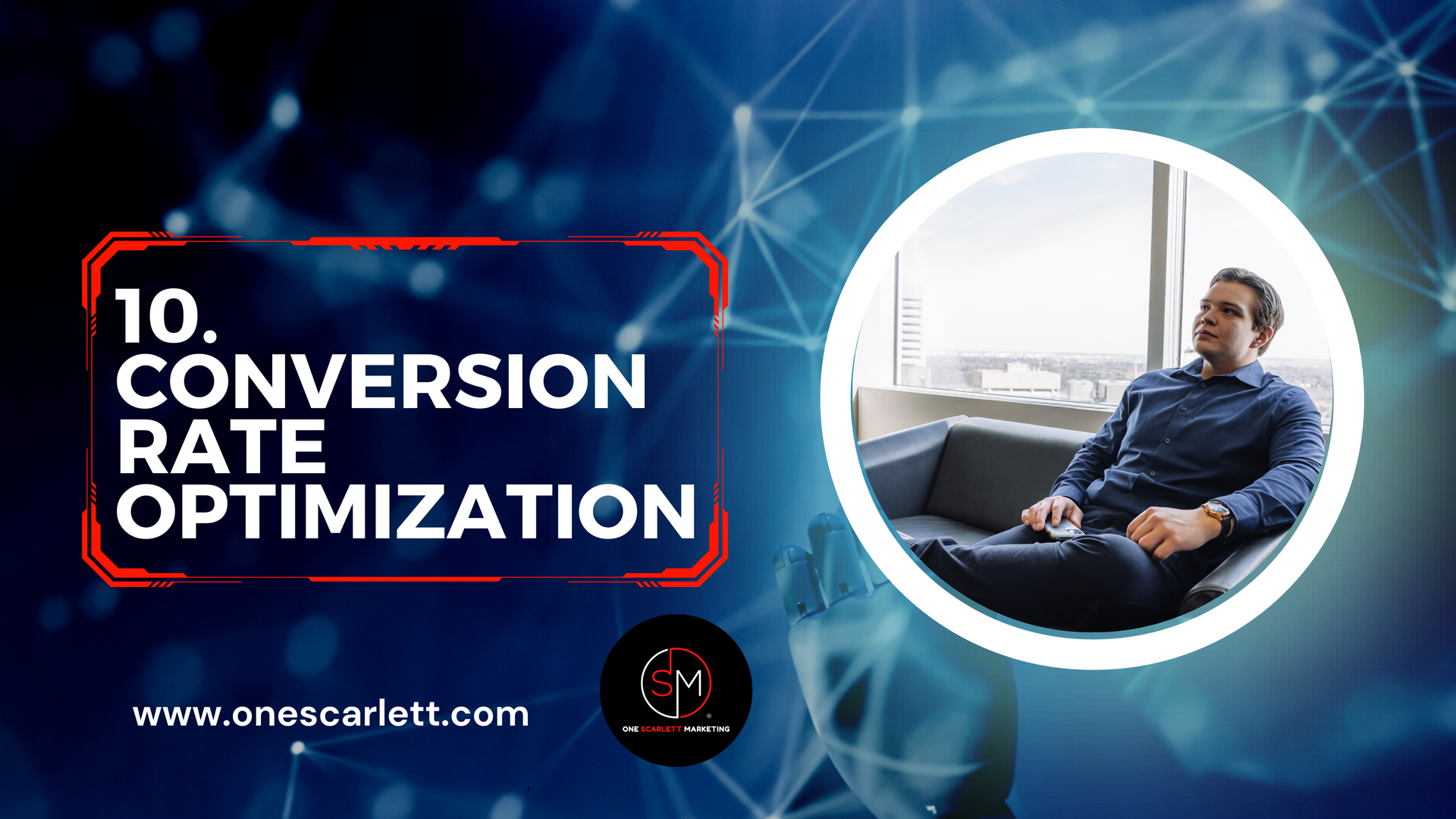
Keep You And Your Family Safe From Online Threats With NORD VPN
Enjoy An Exclusive Partnership Offer with NORD VPN with OneScarlett
Never Worry About Losing Sensitive Financial Information Online with NORD VPN NordVPN 2 Year Deal With 63% Off For Only $3.71 Per Month, With Total Of $89. (30 days risk-free. Not satisfied? Get your money back, no questions asked.)

Full Service Digital Marketing Agency
Multi-Platform Digital Marketing Experts
- Web Design, Web Design Near Me, Website Redesign, Website Management, Website Audit & Website Optimization
- SEO Website Audit, SEO Website Optimizations, Existing Website SEO Enhancements, Social Media SEO
- Social Media Profile Creation, Social Media Profile Audit, Social Media Profile Creation, Social Media Management, Content Creation
- Google Business Profile Help, Google Business Profile Verification, Google Business Profile Content, Google Business Profile Audit
- Facebook Ads Expert, Content Creation, Audience Research, Copywriting, Graphics, All Campaign Enhancements
Full Service Digital Marketing Agency
Multi-Platform Digital Marketing Experts
- Web Design, Web Design Near Me, Website Redesign, Website Management, Website Audit & Website Optimization
- SEO Website Audit, SEO Website Optimizations, Existing Website SEO Enhancements, Social Media SEO
- Social Media Profile Creation, Social Media Profile Audit, Social Media Profile Creation, Social Media Management, Content Creation
- Google Business Profile Help, Google Business Profile Verification, Google Business Profile Content, Google Business Profile Audit
- Facebook Ads Expert, Content Creation, Audience Research, Copywriting, Graphics, All Campaign Enhancements
Full Service Digital Marketing Agency
Multi-Platform Digital Marketing Experts
- Web Design, Web Design Near Me, Website Redesign, Website Management, Website Audit & Website Optimization
- SEO Website Audit, SEO Website Optimizations, Existing Website SEO Enhancements, Social Media SEO
- Social Media Profile Creation, Social Media Profile Audit, Social Media Profile Creation, Social Media Management, Content Creation
- Google Business Profile Help, Google Business Profile Verification, Google Business Profile Content, Google Business Profile Audit
- Facebook Ads Expert, Content Creation, Audience Research, Copywriting, Graphics, All Campaign Enhancements
Full Service Digital Marketing Agency
Multi-Platform Digital Marketing Experts
- Web Design, Web Design Near Me, Website Redesign, Website Management, Website Audit & Website Optimization
- SEO Website Audit, SEO Website Optimizations, Existing Website SEO Enhancements, Social Media SEO
- Social Media Profile Creation, Social Media Profile Audit, Social Media Profile Creation, Social Media Management, Content Creation
- Google Business Profile Help, Google Business Profile Verification, Google Business Profile Content, Google Business Profile Audit
- Facebook Ads Expert, Content Creation, Audience Research, Copywriting, Graphics, All Campaign Enhancements
Full Service Digital Marketing Agency
Multi-Platform Digital Marketing Experts
- Web Design, Web Design Near Me, Web Design, Website Redesign, Website Management, Website Audit & Website Optimization
- SEO Website Audit, SEO Website Optimizations, Existing Website SEO Enhancements, Social Media SEO
- Social Media Profile Creation, Social Media Profile Audit, Social Media Profile Creation, Social Media Management, Content Creation
- Google Business Profile Help, Google Business Profile Verification, Google Business Profile Content, Google Business Profile Audit
- Facebook Ads Expert, Content Creation, Audience Research, Copywriting, Graphics, All Campaign Enhancements
Full Service Digital Marketing Agency
Multi-Platform Digital Marketing Experts
- Web Design, Web Design Near Me, Web Design, Website Redesign, Website Management, Website Audit & Website Optimization
- SEO Website Audit, SEO Website Optimizations, Existing Website SEO Enhancements, Social Media SEO
- Social Media Profile Creation, Social Media Profile Audit, Social Media Profile Creation, Social Media Management, Content Creation
- Google Business Profile Help, Google Business Profile Verification, Google Business Profile Content, Google Business Profile Audit
- Facebook Ads Expert, Content Creation, Audience Research, Copywriting, Graphics, All Campaign Enhancements
Full Service Digital Marketing Agency
Multi-Platform Digital Marketing Experts
- Web Design, Web Design Near Me, Website Redesign, Website Management, Website Audit & Website Optimization
- SEO Website Audit, SEO Website Optimizations, Existing Website SEO Enhancements, Social Media SEO
- Social Media Profile Creation, Social Media Profile Audit, Social Media Profile Creation, Social Media Management, Content Creation
- Google Business Profile Help, Google Business Profile Verification, Google Business Profile Content, Google Business Profile Audit
- Facebook Ads Expert, Content Creation, Audience Research, Copywriting, Graphics, All Campaign Enhancements
Full Service Digital Marketing Agency
Multi-Platform Digital Marketing Experts
- Web Design, Web Design Near Me, Website Redesign, Website Management, Website Audit & Website Optimization
- SEO Website Audit, SEO Website Optimizations, Existing Website SEO Enhancements, Social Media SEO
- Social Media Profile Creation, Social Media Profile Audit, Social Media Profile Creation, Social Media Management, Content Creation
- Google Business Profile Help, Google Business Profile Verification, Google Business Profile Content, Google Business Profile Audit
- Facebook Ads Expert, Content Creation, Audience Research, Copywriting, Graphics, All Campaign Enhancements
Full Service Digital Marketing Agency
Multi-Platform Digital Marketing Experts
- Web Design, Web Design Near Me, Website Redesign, Website Management, Website Audit & Website Optimization
- SEO Website Audit, SEO Website Optimizations, Existing Website SEO Enhancements, Social Media SEO
- Social Media Profile Creation, Social Media Profile Audit, Social Media Profile Creation, Social Media Management, Content Creation
- Google Business Profile Help, Google Business Profile Verification, Google Business Profile Content, Google Business Profile Audit
- Facebook Ads Expert, Content Creation, Audience Research, Copywriting, Graphics, All Campaign Enhancements
Full Service Digital Marketing Agency
Multi-Platform Digital Marketing Experts
- Web Design, Web Design Near Me, Website Redesign, Website Management, Website Audit & Website Optimization
- SEO Website Audit, SEO Website Optimizations, Existing Website SEO Enhancements, Social Media SEO
- Social Media Profile Creation, Social Media Profile Audit, Social Media Profile Creation, Social Media Management, Content Creation
- Google Business Profile Help, Google Business Profile Verification, Google Business Profile Content, Google Business Profile Audit
- Facebook Ads Expert, Content Creation, Audience Research, Copywriting, Graphics, All Campaign Enhancements
Full Service Digital Marketing Agency
Multi-Platform Digital Marketing Experts
- Web Design, Web Design Near Me, Website Redesign, Website Management, Website Audit & Website Optimization
- SEO Website Audit, SEO Website Optimizations, Existing Website SEO Enhancements, Social Media SEO
- Social Media Profile Creation, Social Media Profile Audit, Social Media Profile Creation, Social Media Management, Content Creation
- Google Business Profile Help, Google Business Profile Verification, Google Business Profile Content, Google Business Profile Audit
- Facebook Ads Expert, Content Creation, Audience Research, Copywriting, Graphics, All Campaign Enhancements
Full Service Digital Marketing Agency
Multi-Platform Digital Marketing Experts
- Web Design, Web Design Near Me, Website Redesign, Website Management, Website Audit & Website Optimization
- SEO Website Audit, SEO Website Optimizations, Existing Website SEO Enhancements, Social Media SEO
- Social Media Profile Creation, Social Media Profile Audit, Social Media Profile Creation, Social Media Management, Content Creation
- Google Business Profile Help, Google Business Profile Verification, Google Business Profile Content, Google Business Profile Audit
- Facebook Ads Expert, Content Creation, Audience Research, Copywriting, Graphics, All Campaign Enhancements
Full Service Digital Marketing Agency
Multi-Platform Digital Marketing Experts
- Web Design, Web Design Near Me, Website Redesign, Website Management, Website Audit & Website Optimization
- SEO Website Audit, SEO Website Optimizations, Existing Website SEO Enhancements, Social Media SEO
- Social Media Profile Creation, Social Media Profile Audit, Social Media Profile Creation, Social Media Management, Content Creation
- Google Business Profile Help, Google Business Profile Verification, Google Business Profile Content, Google Business Profile Audit
- Facebook Ads Expert, Content Creation, Audience Research, Copywriting, Graphics, All Campaign Enhancements
Full Service Digital Marketing Agency
Multi-Platform Digital Marketing Experts
- Web Design, Web Design Near Me, Website Redesign, Website Management, Website Audit & Website Optimization
- SEO Website Audit, SEO Website Optimizations, Existing Website SEO Enhancements, Social Media SEO
- Social Media Profile Creation, Social Media Profile Audit, Social Media Profile Creation, Social Media Management, Content Creation
- Google Business Profile Help, Google Business Profile Verification, Google Business Profile Content, Google Business Profile Audit
- Facebook Ads Expert, Content Creation, Audience Research, Copywriting, Graphics, All Campaign Enhancements
Full Service Digital Marketing Agency
Multi-Platform Digital Marketing Experts
- Web Design, Web Design Near Me, Website Redesign, Website Management, Website Audit & Website Optimization
- SEO Website Audit, SEO Website Optimizations, Existing Website SEO Enhancements, Social Media SEO
- Social Media Profile Creation, Social Media Profile Audit, Social Media Profile Creation, Social Media Management, Content Creation
- Google Business Profile Help, Google Business Profile Verification, Google Business Profile Content, Google Business Profile Audit
- Facebook Ads Expert, Content Creation, Audience Research, Copywriting, Graphics, All Campaign Enhancements
Full Service Digital Marketing Agency
Multi-Platform Digital Marketing Experts
- Web Design, Web Design Near Me, Website Redesign, Website Management, Website Audit & Website Optimization
- SEO Website Audit, SEO Website Optimizations, Existing Website SEO Enhancements, Social Media SEO
- Social Media Profile Creation, Social Media Profile Audit, Social Media Profile Creation, Social Media Management, Content Creation
- Google Business Profile Help, Google Business Profile Verification, Google Business Profile Content, Google Business Profile Audit
- Facebook Ads Expert, Content Creation, Audience Research, Copywriting, Graphics, All Campaign Enhancements
Full Service Digital Marketing Agency
Multi-Platform Digital Marketing Experts
- Web Design, Web Design Near Me, Website Redesign, Website Management, Website Audit & Website Optimization
- SEO Website Audit, SEO Website Optimizations, Existing Website SEO Enhancements, Social Media SEO
- Social Media Profile Creation, Social Media Profile Audit, Social Media Profile Creation, Social Media Management, Content Creation
- Google Business Profile Help, Google Business Profile Verification, Google Business Profile Content, Google Business Profile Audit
- Facebook Ads Expert, Content Creation, Audience Research, Copywriting, Graphics, All Campaign Enhancements
Full Service Digital Marketing Agency
Multi-Platform Digital Marketing Experts
- Web Design, Web Design Near Me, Website Redesign, Website Management, Website Audit & Website Optimization
- SEO Website Audit, SEO Website Optimizations, Existing Website SEO Enhancements, Social Media SEO
- Social Media Profile Creation, Social Media Profile Audit, Social Media Profile Creation, Social Media Management, Content Creation
- Google Business Profile Help, Google Business Profile Verification, Google Business Profile Content, Google Business Profile Audit
- Facebook Ads Expert, Content Creation, Audience Research, Copywriting, Graphics, All Campaign Enhancements
Full Service Digital Marketing Agency
Multi-Platform Digital Marketing Experts
- Web Design, Web Design Near Me, Website Redesign, Website Management, Website Audit & Website Optimization
- SEO Website Audit, SEO Website Optimizations, Existing Website SEO Enhancements, Social Media SEO
- Social Media Profile Creation, Social Media Profile Audit, Social Media Profile Creation, Social Media Management, Content Creation
- Google Business Profile Help, Google Business Profile Verification, Google Business Profile Content, Google Business Profile Audit
- Facebook Ads Expert, Content Creation, Audience Research, Copywriting, Graphics, All Campaign Enhancements
Full Service Digital Marketing Agency
Multi-Platform Digital Marketing Experts
- Web Design, Web Design Near Me, Website Redesign, Website Management, Website Audit & Website Optimization
- SEO Website Audit, SEO Website Optimizations, Existing Website SEO Enhancements, Social Media SEO
- Social Media Profile Creation, Social Media Profile Audit, Social Media Profile Creation, Social Media Management, Content Creation
- Google Business Profile Help, Google Business Profile Verification, Google Business Profile Content, Google Business Profile Audit
- Facebook Ads Expert, Content Creation, Audience Research, Copywriting, Graphics, All Campaign Enhancements
Full Service Digital Marketing Agency
Multi-Platform Digital Marketing Experts
- Web Design, Web Design Near Me, Website Redesign, Website Management, Website Audit & Website Optimization
- SEO Website Audit, SEO Website Optimizations, Existing Website SEO Enhancements, Social Media SEO
- Social Media Profile Creation, Social Media Profile Audit, Social Media Profile Creation, Social Media Management, Content Creation
- Google Business Profile Help, Google Business Profile Verification, Google Business Profile Content, Google Business Profile Audit
- Facebook Ads Expert, Content Creation, Audience Research, Copywriting, Graphics, All Campaign Enhancements
Full Service Digital Marketing Agency
Multi-Platform Digital Marketing Experts
- Web Design, Web Design Near Me, Website Redesign, Website Management, Website Audit & Website Optimization
- SEO Website Audit, SEO Website Optimizations, Existing Website SEO Enhancements, Social Media SEO
- Social Media Profile Creation, Social Media Profile Audit, Social Media Profile Creation, Social Media Management, Content Creation
- Google Business Profile Help, Google Business Profile Verification, Google Business Profile Content, Google Business Profile Audit
- Facebook Ads Expert, Content Creation, Audience Research, Copywriting, Graphics, All Campaign Enhancements
Full Service Digital Marketing Agency
Multi-Platform Digital Marketing Experts
- Web Design, Web Design Near Me, Website Redesign, Website Management, Website Audit & Website Optimization
- SEO Website Audit, SEO Website Optimizations, Existing Website SEO Enhancements, Social Media SEO
- Social Media Profile Creation, Social Media Profile Audit, Social Media Profile Creation, Social Media Management, Content Creation
- Google Business Profile Help, Google Business Profile Verification, Google Business Profile Content, Google Business Profile Audit
- Facebook Ads Expert, Content Creation, Audience Research, Copywriting, Graphics, All Campaign Enhancements
Full Service Digital Marketing Agency
Multi-Platform Digital Marketing Experts
- Web Design, Web Design Near Me, Website Redesign, Website Management, Website Audit & Website Optimization
- SEO Website Audit, SEO Website Optimizations, Existing Website SEO Enhancements, Social Media SEO
- Social Media Profile Creation, Social Media Profile Audit, Social Media Profile Creation, Social Media Management, Content Creation
- Google Business Profile Help, Google Business Profile Verification, Google Business Profile Content, Google Business Profile Audit
- Facebook Ads Expert, Content Creation, Audience Research, Copywriting, Graphics, All Campaign Enhancements
Full Service Digital Marketing Agency
Multi-Platform Digital Marketing Experts
- Web Design, Web Design Near Me, Website Redesign, Website Management, Website Audit & Website Optimization
- SEO Website Audit, SEO Website Optimizations, Existing Website SEO Enhancements, Social Media SEO
- Social Media Profile Creation, Social Media Profile Audit, Social Media Profile Creation, Social Media Management, Content Creation
- Google Business Profile Help, Google Business Profile Verification, Google Business Profile Content, Google Business Profile Audit
- Facebook Ads Expert, Content Creation, Audience Research, Copywriting, Graphics, All Campaign Enhancements
One Scarlett Marketing Inc. is in the Greater Edmonton Metropolitan Area.
Digital Marketing Experts Canada E.E.A.T.
Digital Marketing Near Me
Greater Edmonton Area
Greater Calgary Area
Greater Vancouver Area
Greater Toronto Area
Greater Montreal Area
Greater Ottawa Area
Greater Regina Area
Greater Saskatoon Area
Digital Marketing United States
One Scarlett Marketing Inc. Proudly growing Canadian Businesses Since 2015


